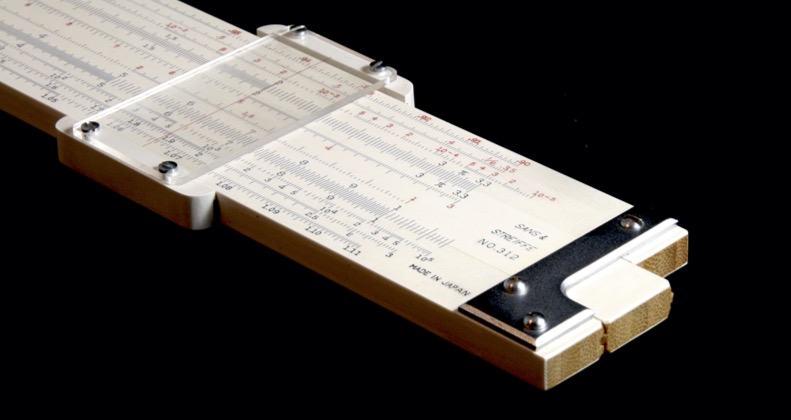Chapter Topics
This web site is organized in book form. Using the side bar, or by clicking various links throughout the site, topics can be accessed directly. Or, the reader can go through the entire site page by page, chapter by chapter, using the arrow keys. Below we describe individual chapters that follow our present Organization of the site.
Review
The first few chapters provide introductory material written for someone unfamiliar with the slide rule, although a certain level of basic math skill is assumed. Chapter 1 describes the mathematical framework that governs the use of slide rules in computations – the logarithm. While a deep understanding of the logarithm is not necessary to learn how to perform the basic operations of a slide rule, it is certainly of great help when trying to master them.
In Chapter 2, a calculus-based discussion of how values of logarithms can be computed numerically is presented. Again, knowing how to compute values of logarithms is not required before using such values to perform calculations, but we include this chapter for completeness of the topic. It might someday be important to the reader to quickly find a description of how to calculate the logarithm of any number they wish.
Next, in Chapter 3, the various standard logarithmic scales found on the most common slide rules are described, as well as procedures for using them in performing calculations. These include scales used for multiplication and division, finding squares and square roots, performing trigonometric calculations, raising a number to an arbitrary power, and so on.
The Collection
With a basic understanding of logarithms, how they are used in calculations, and how they are utilized on a slide rule, the following chapters delve into the slide rule collection itself. Chapter 4 presents the entire collection organized in chronological order. The format of this chapter provides a quick, easy-to-navigate visual overview of all the slide rules. It is nice to visualize the general development and variations of the slide rule over time. On the other hand, Chapter 5 presents the entire collection organized by major slide rule maker or groups of related makers. The lists provided here have further details of each rule and some information for each major slide rule maker. Links to photos of the rules also are included in the lists found in this chapter.
Special groupings of items in the collection can be found in the various sections of Chapter 6. Here, one can quickly find the 25 oldest rules, the youngest rules, “beginner’s” rules, rules with the most number of scales, and other special listings. And Chapter 7 presents a number of historical books, manuals, and slide charts that also have become part of the collection.
Finally, in Chapter 8, a series of blog-like vignettes can be found. This continuously growing set of articles and stories provides special insights and details of portions of the slide rule collection, as well as commentary on the fun of collecting. As this chapter is often expanded and updated, the vignettes are not necessarily presented in the order in which they were written; rather, they are grouped roughly according to topics and in an order geared toward new slide rule enthusiasts. For convenience to those returning to the site, the latest stories and updates are listed at the beginning of the chapter.
Appendices
Appendices are included which provide a brief time-line of the history of the slide rule, a listing of common slide rule scales, lists of the scale sets found on all of the rules in the collection, some statistics of the current collection, and a synopsis of the database used to create this document. One of the more useful appendices is a searchable table of the entire collection. To get a summary overview of a particular slide rule, data sheets have images and additional information, including individual references, for each item. Links to other important introductory materials are found at the end of the Appendices.
The state of the collection is kept up to date through the use of a database maintained and processed using the R programming language (R Core Team 2021). A few details about the database can be found in Data Frame Properties. When changes to the database are made, the present document is automatically updated through the bookdown package (Xie 2016) in R and re-posted.
About
Further information about the site and its author is followed by a relatively extensive set of references. This section provides references and links to general information and important web sites, as well as to references and links to articles relevant to items found in the collection and their makers. There is also an interactive table to a collection of downloadable pdf files of historical books that have been found online.
| Photographic images, figures, tables, and other graphics found throughout the text have been produced by the author unless otherwise noted. |  |
Errors, of course, are expected and acknowledged, as I am still learning while long-time devotees of the subject have much more knowledge than I about the slide rules and their history. I am deeply thankful for their tutelage and encouragement.
On the next page we present a few tips for best navigating and viewing the site, including the use of its search tool and other features.